MSRP (*Base Edition)
Hybrid PHEV | Sedan | 102KM
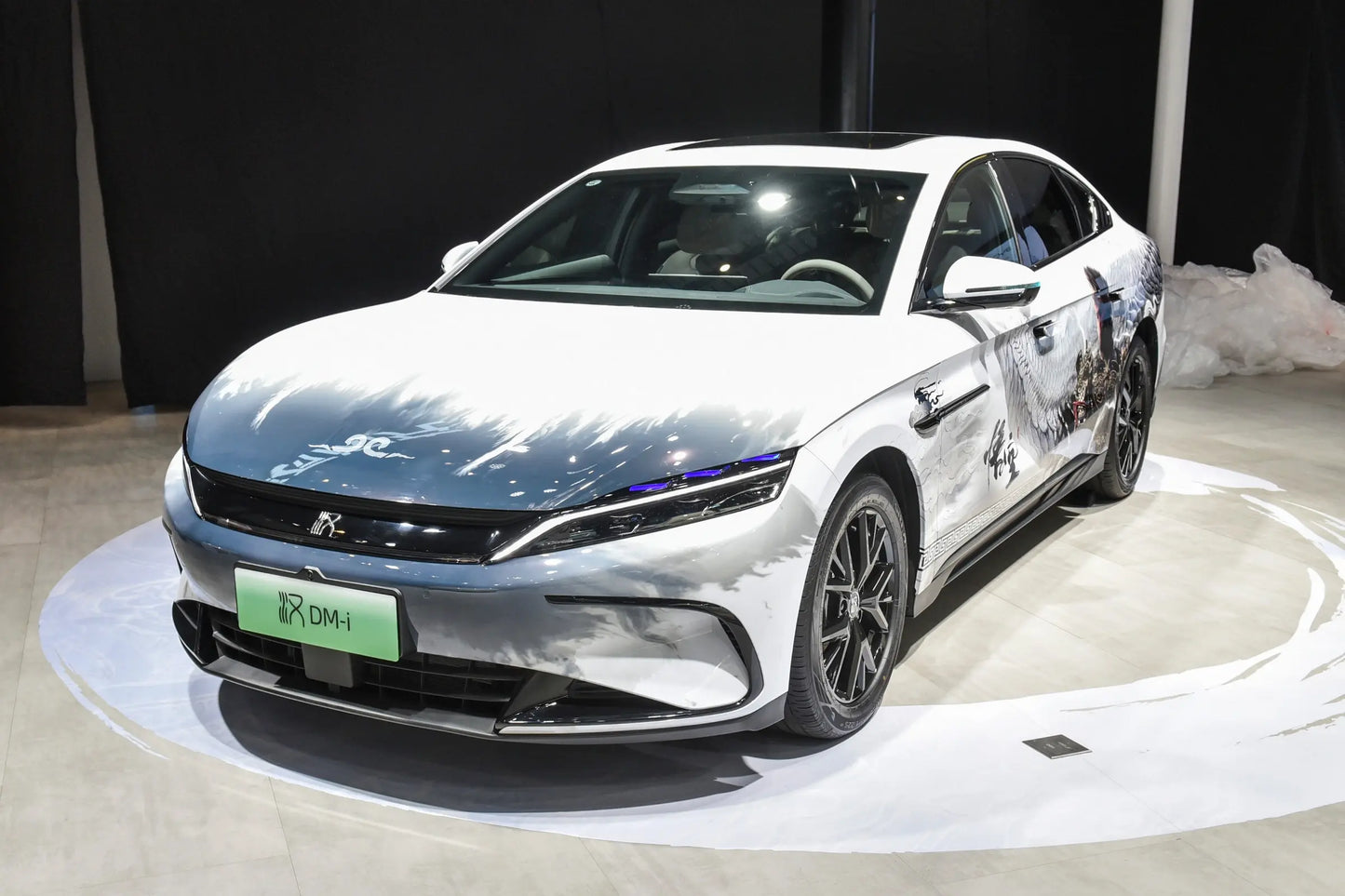
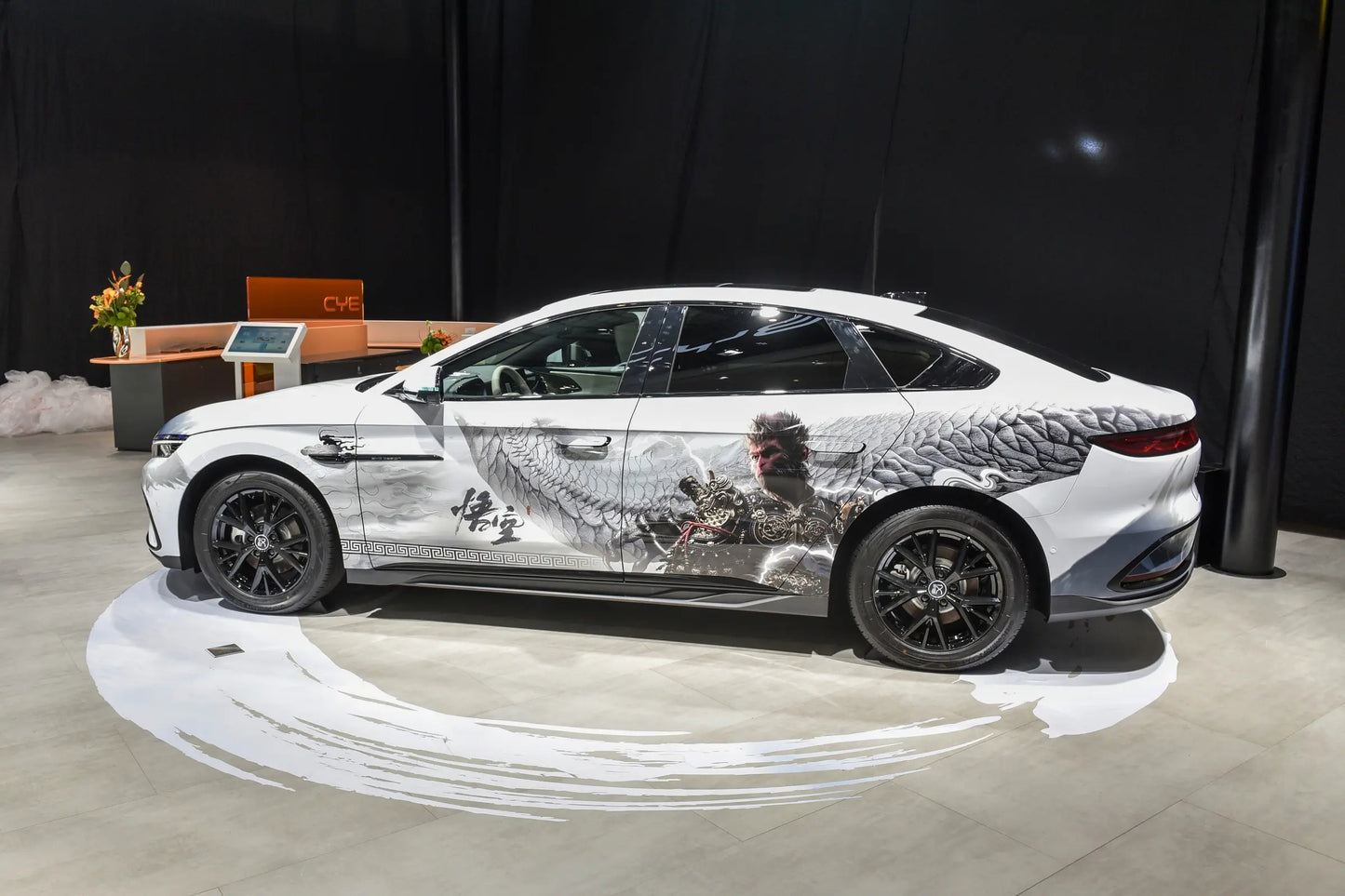
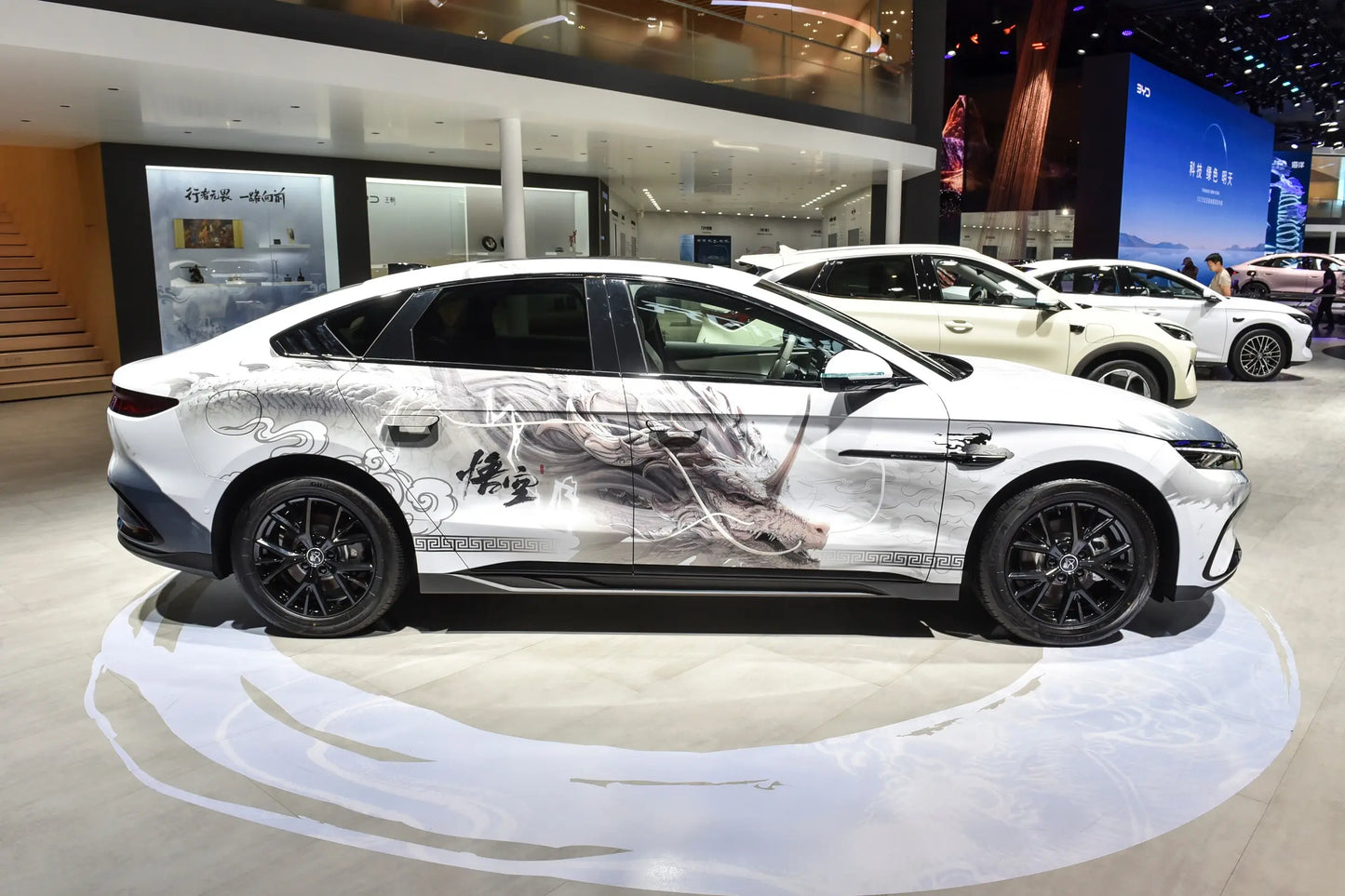
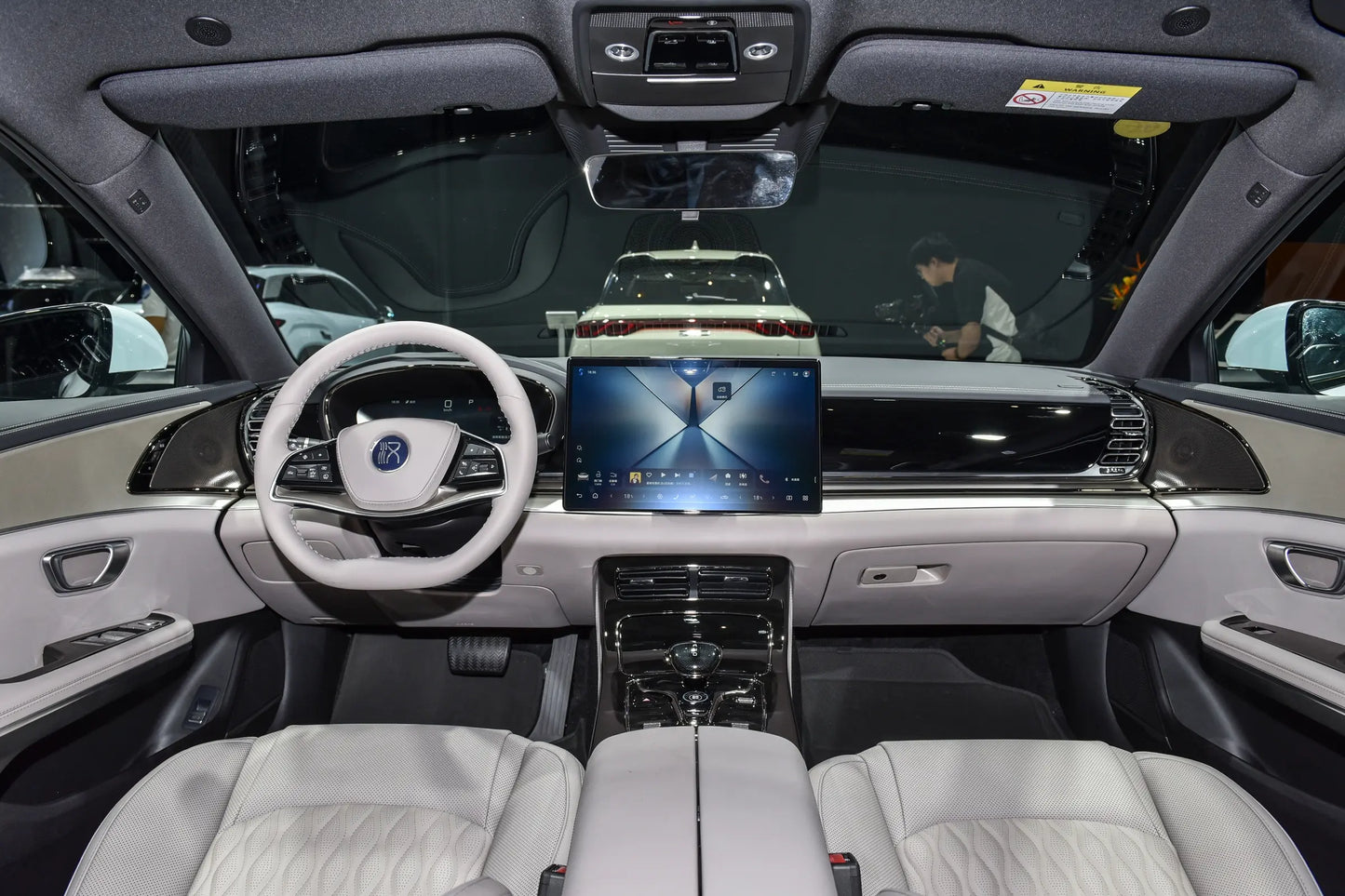
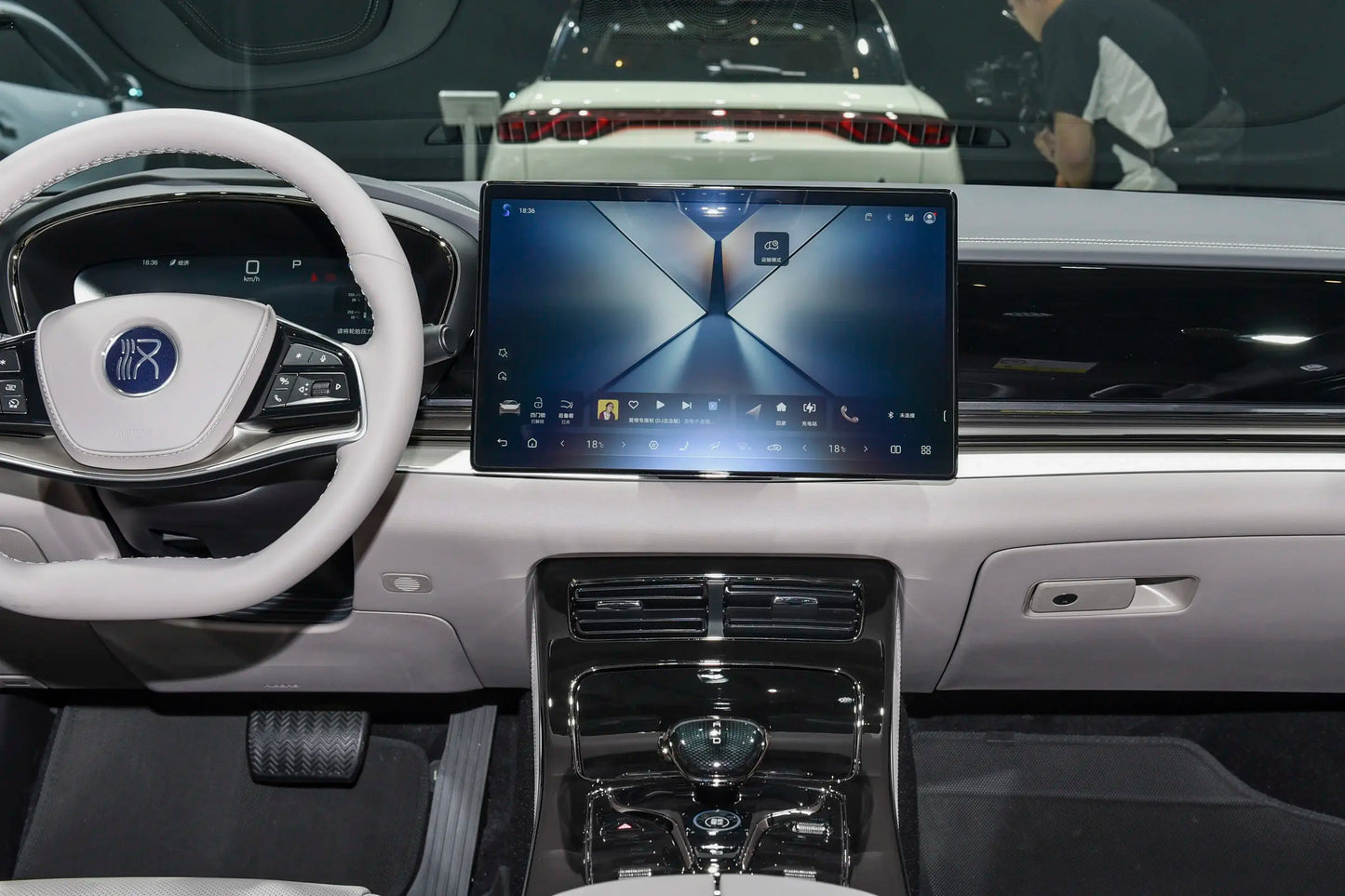
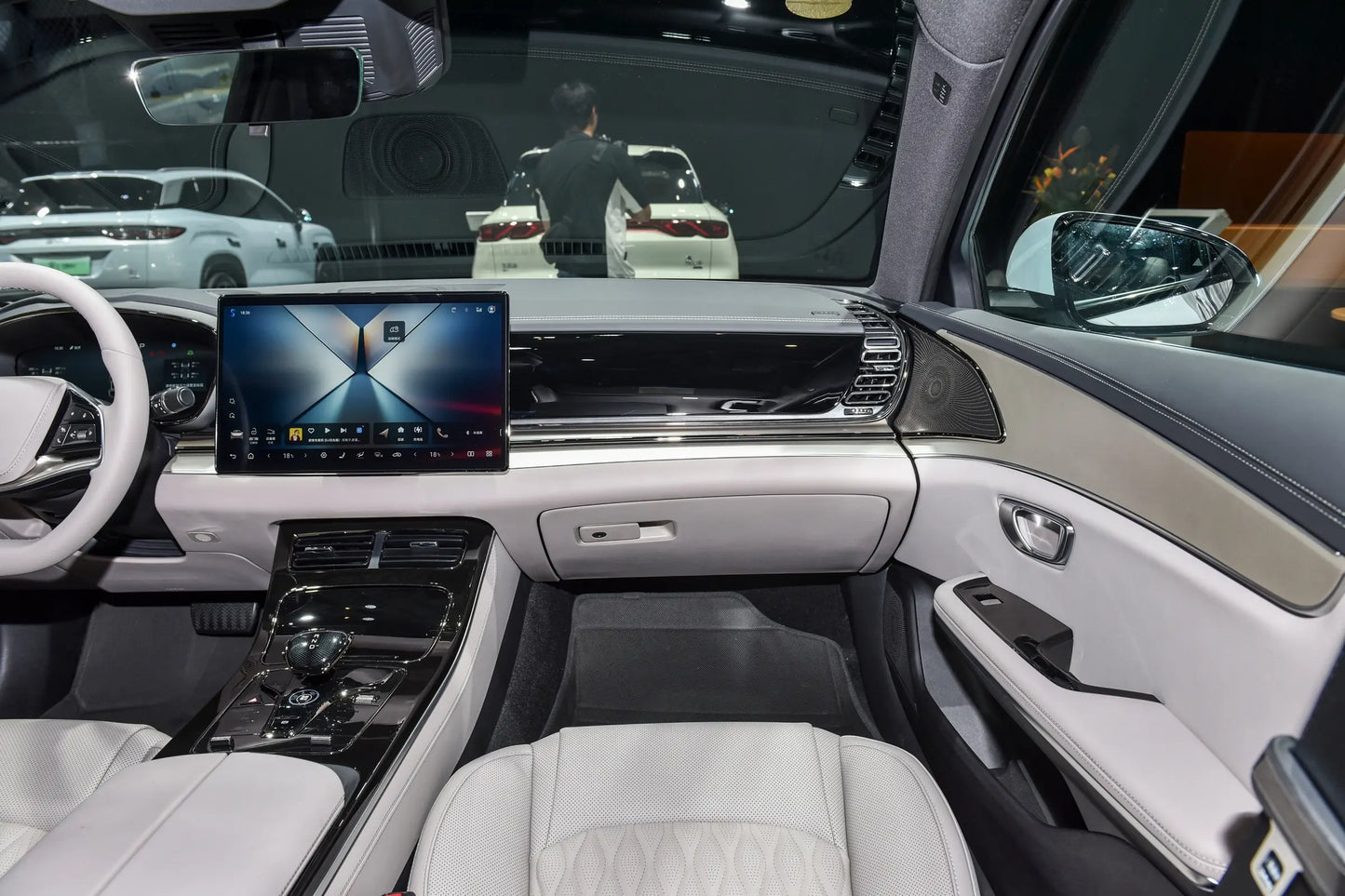
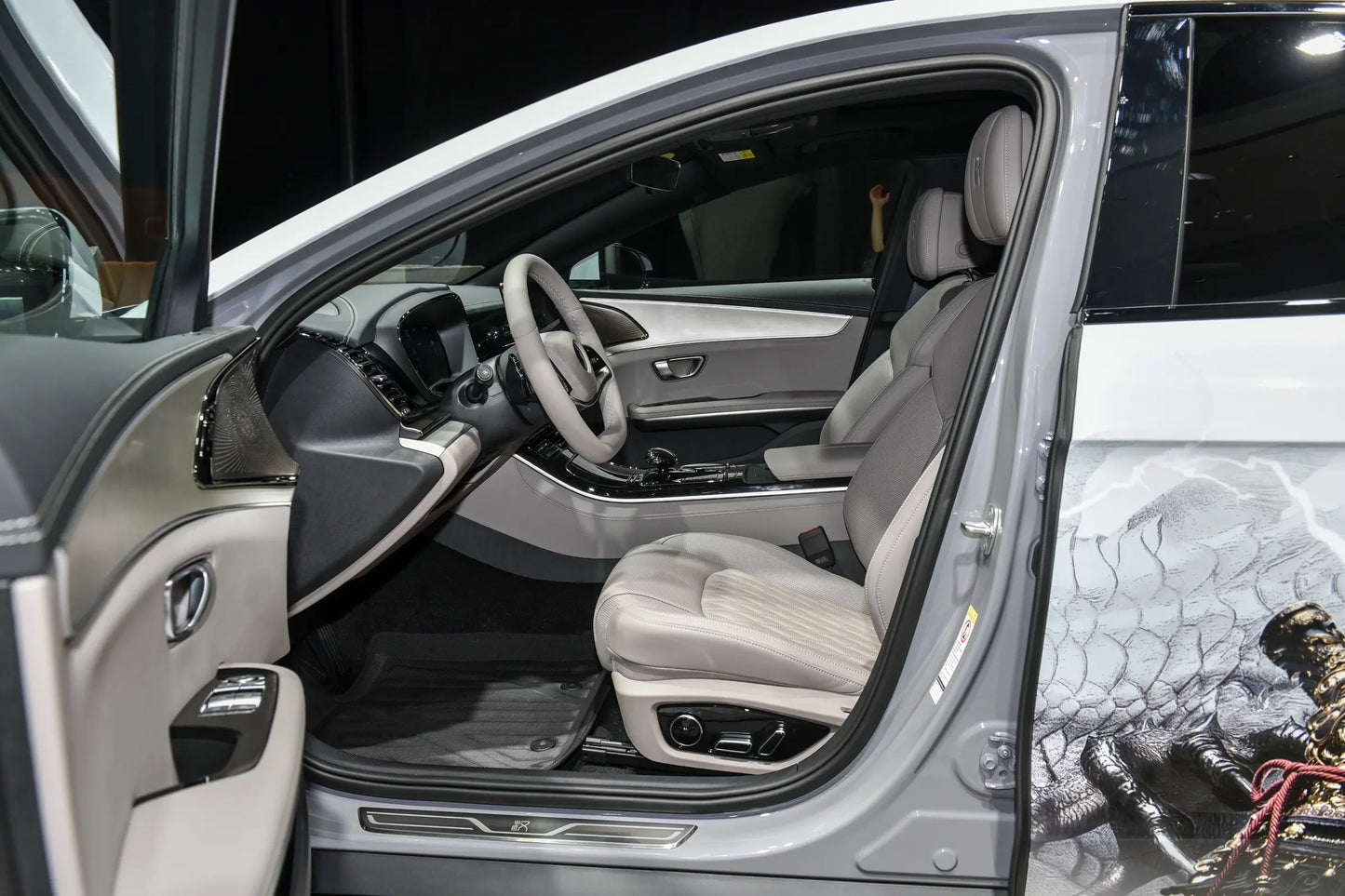
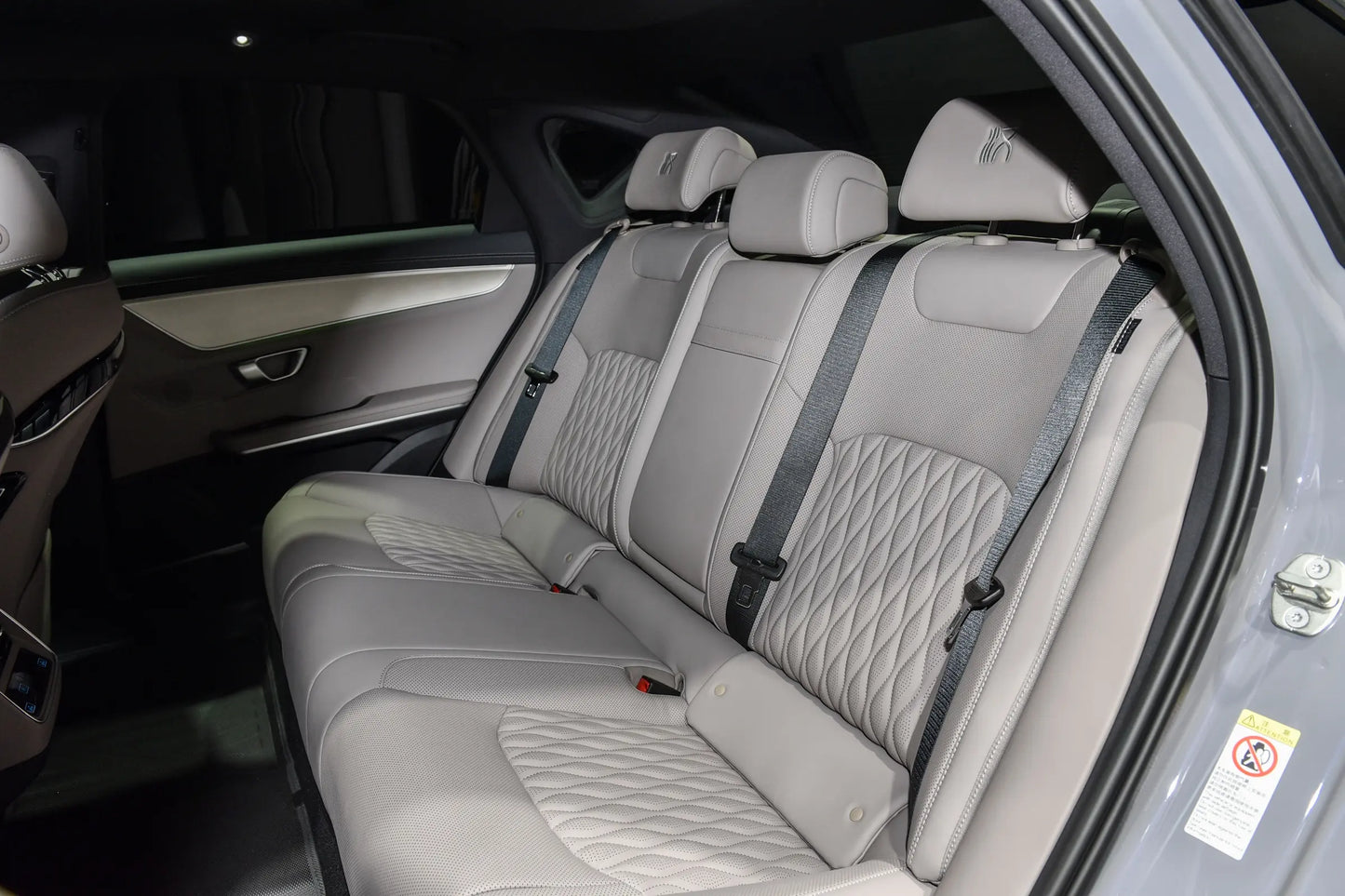
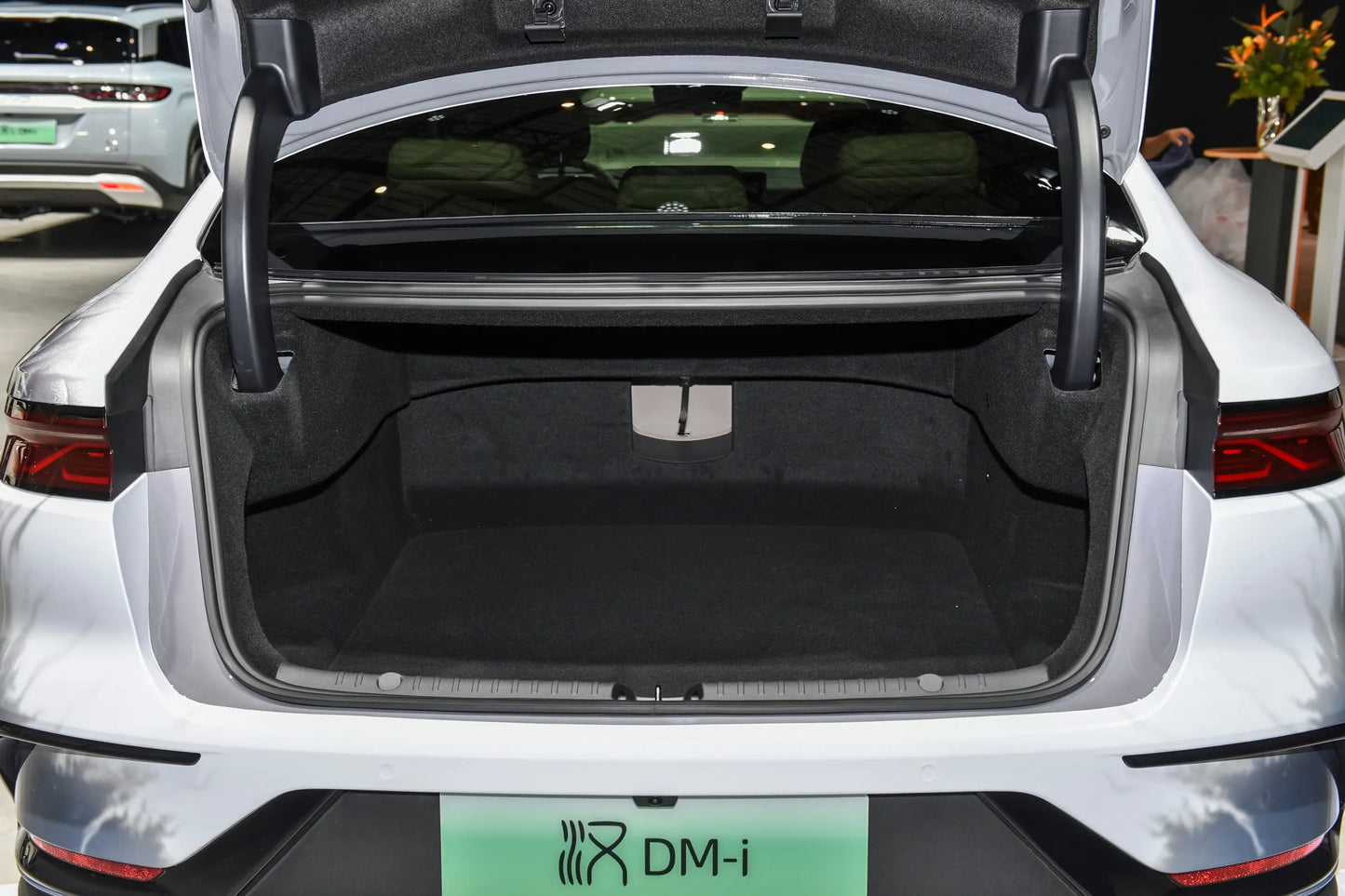
-
BrandBYD
-
Vechile ClassSedan
-
Energy TypeHybrid PHEV
-
Pure Electric Range(KM)102
-
Curb Weight (kg)1910
-
Battery TypeLithium Iron Phosphate Battery
-
Total Power of Motor (KW)200
-
Maximum Power(KW)115
-
Total Torque of Motor(N・m)315
-
Maximum Torque(N・m)225
-
Length x Width x Height(mm)4995x1910x1495
-
Official 0-100km/h Acceleration Time(s)6.9
-
Power Consumption(kWh/100km)15
-
Equivalent Fuel Consumption (Electricity)(L/100km)2.8
-
Battery Capacity(kWh)18.31
-
MaximumSpeed(km/h)200
-
Motor LayoutFront-mounted
-
Transmissionelectronic continuously variable transmission
-
Displacement(L)1.5
-
Intake TypeTurbocharging
-
IDph09003
Panoramic Interiors
Video Manual
Authentic on-site shots for an immersive vehicle detail experience
Real Customer Reviews
Source: DCAR
Review A
【Car Purchase Experience】
I previously owned an old fuel-powered car, but it was too outdated, with limited space and high fuel consumption, which couldn't meet my current personal needs. So, starting from early 2024, I have been关注ing new energy vehicles. In mid-2024, I began visiting various 4S stores to check out cars, test drive them, and inquire about prices. I tried many mainstream new energy models, both pure electric and plug-in hybrid, and later chose plug-in hybrid to avoid range anxiety. Finally, I set my sights on the 2025 BYD Han, which has a very attractive外观. I then started negotiating the price and finally happily picked up my new car in mid-December 2024.
【Service Experience】
The service from the sales staff and other personnel was very good. Since my target was clear, the communication on details was quite straightforward, and the experience was pretty good.
【Space Performance】
The interior space of the Han is really impressive; it's large and spacious, and the seats are comfortable. Especially the angle of the rear seats, which I personally find extremely comfortable, though I usually drive, so I don't get much chance to experience it for long. As for the trunk, it's indeed a bit small and not wide enough. Once you fit two larger suitcases, there's barely any space left. This is definitely a drawback.
【Range and Energy Consumption】
It's quite different from the宣传. In the second month after picking up the car, I特意 tested it. I didn't drive particularly slowly, just as I normally do, keeping up with the speed limit—not especially fast, but definitely not slow. The journey was about half urban and half highway. With a full tank of fuel and full charge, a range of around 900 kilometers is achievable. If driven gently, 1,000 kilometers should be possible. This is acceptable because I had prepared mentally for this aspect beforehand.
【Driver Assistance】
Having driver assistance features is better than not having them. There's no so-called "snaking" issue as some people claim. I personally wasn't very trusting of such features before and only used them occasionally on the highway when there weren't many cars. Until later, I tried the newly upgraded TianShenZhiYan (God's Eye) C system, and I was shocked—filled with envy. I can only regret buying the car too early.
【Intelligent Cockpit】
It's not particularly intelligent or top-notch; it can only be said to be sufficient. The infotainment system is smooth, the voice assistant has relatively accurate recognition, and many physical buttons are retained, which is good. I personally think it's够用了.
【Charging Time】
It's not necessary to discuss charging time for plug-in hybrid cars. The 18kWh battery, although with a fast charging power of only 40kW, is sufficient. I generally don't use fast charging. I've had the car for over half a year, driven more than 10,000 kilometers, and only used fast charging twice, just to test the power. Usually, I use the provided 7kW slow charger. The electricity cost is cheap during off-peak night hours, and I don't have to compete for charging piles. Even if I run on fuel, the fuel consumption is not high, so why not?
【Maintenance】
I've only done the first maintenance; the second one hasn't reached the time or mileage yet, so there's not much to talk about.
【Most Dissatisfied】
There are several things I'm most dissatisfied with. First, like many 2025 model owners and even many 2024 and 2023 model owners, I feel the ultimate betrayal!!! This is really unpleasant, but there's nothing I can do but accept it silently. Second, the trunk space is indeed small. Third, the suspension is too bouncy when crossing speed bumps; it's more颠簸 than riding a boat. The tuning is really disappointing. Fourth, OTA updates. It has only been updated once after such a long time, and only the sentinel mode was added; the omnidirectional recorder wasn't included. It really lacks sincerity...
Summary: The vehicle is still in use. I will continue to discuss its advantages and disadvantages in the future and hope that fellow car owners will share their experiences. That's all for now.
Review B
1. Advantages of Han:
1. Spacious interior. Maybe because I'm used to driving the small Skoda Octavia, I find the rear space of Han extremely large. Previously, the back seat of my old car was quite cramped with three people, but now it's much more comfortable. However, the headroom in the rear isn't very ample; passengers over 1.8 meters may still feel a bit cramped. The ride comfort is satisfactory.
2. Sufficient power. Electric vehicles absolutely outperform fuel-powered cars in terms of power; they're not products of the same era. As long as you press the accelerator, the power output is sufficient, more than enough for family use.
3. Good sound insulation. Han is equipped with double-layer soundproof glass; once the windows are closed, everything becomes quiet. To be honest, cars of this class generally have good sound insulation.
4. Decent energy consumption. Having driven over 8,900 kilometers in more than 4 months, with over 900 kilometers in HEV mode, the average electricity consumption is around 15 kWh. The fastest charging speed can reach 42 kW, but only for a few minutes. Charging from 30% to 80% takes about 20 minutes, and above 90%, the speed drops below 7 kW, taking over 50 minutes to fully charge.
5. Stylish and elegant appearance. Overall, Han's build quality is good, with exquisite interior details. The chassis materials aren't exceptional, but it does feature a rear five-link suspension.
6. Stable quality. As a family car, stability is important, and no quality issues have been found so far.
2. Disadvantages:
1. Small trunk and non-folding rear seats. I don't understand BYD's design; many cars in the same class allow seats to be fully folded to form a bed. Not being able to adjust the rear seats is excessive. Forget about using this car for camping beds; if you enjoy outdoor camping and sleeping in the car, better buy an SUV. Additionally, the trunk height is low and space is limited, unable to accommodate large items. Here I have to mention my Octavia "small pickup" again—whether placing a bicycle, my daughter's handcrafted electric car, or various large items during moving, it offers unrestricted loading, outperforming Han in every way. A B+ class car with a wheelbase接近3 meters has a much smaller trunk than the Octavia, an A-class car with a 2570mm wheelbase.
2. Large turning radius. Whether due to size or design, Han has an excessively large turning radius. U-turns on small bends are nearly impossible, and when sending kids to school in the morning, I often have to reverse once or twice under the gaze of the cars behind before completing the U-turn. Han is only suitable for urban and highway driving; exercise caution on mountain roads with many sharp bends.
3. Low chassis. Hitting slightly larger speed bumps or potholes at higher speeds risks bottoming out—I recall this happening once. The only solutions are adding a protective plate or减速 in advance; no better options exist.
4. Short pure electric range. With an 18 kWh battery and claimed 125 km range, subtracting the forced battery preservation portion and accounting for summer AC/ winter low-temperature discounts, actual one-time range is around 80-90 km. For me, this means charging every 2-3 days, which is somewhat frequent. Many plug-in hybrids now offer over 200 km pure electric range. With battery prices having dropped significantly, couldn't BYD be more generous and install a larger battery? Thus, plug-in hybrids really suit users with convenient charging access.
5. Useless wireless charging. Even with moderate temperatures recently, phones get extremely hot after charging for a while—so hot that the hotspot function shuts down automatically. Charging speed is also slow. Not sure if it's a quality issue or common problem; will have it checked during the first maintenance. Better to just use a charging cable!
6. Occasional navigation satellite search failure. This has happened twice; once it occurs, satellites can't be found and navigation becomes unusable. The solution is simple: turn off and restart the car. A brief 4S inspection found no issues, suggesting a system update during the first maintenance (taking half a day). Online users say it's a system problem fixable by updating.
7. Poor sunroof heat insulation. Han avoids the common new energy vehicle flaw of non-opening sunroofs, but its electric sunshade is too thin. My workplace has an open parking lot, and anyone in Chongqing knows summer sun intensity. Regardless of interior temperature, feeling heat radiating through the closed sunshade is unacceptable. My current solution: applying a static cling heat-insulating sunshade film. With recent mild temperatures, effectiveness is unproven but appears promising. Couldn't BYD use thicker material for the sunshade or eliminate the sunroof entirely? It's rarely used anyway.
8. Excessive piano paint surfaces. While piano paint on the front passenger panel is acceptable (since no one touches it much), the frequently contacted center console becomes a fingerprint magnet. Couldn't BYD improve this? Simple solutions exist: films or covers widely available online. I added a leather console cover with good material and stitching, but it doesn't perfectly match the armrest box.
9. Mediocre infotainment system. Generally smooth, but voice control lacks functionality. It should keep up with the times and integrate DeepSeek; it can't answer slightly complex questions. System updates are reportedly slow, despite claims of "lifetime free OTA." Personally, I believe frequent updates aren't necessary as long as the system works properly. Additionally, sentry mode is still unavailable—while I rarely use it, its absence is notable.
10. Adaptive cruise works but feels unreliable. It's comfortable on highways, reducing driving fatigue, and performs well in urban traffic jams by eliminating constant throttle/brake switching. However, when encountering cut-ins, it's slow to decelerate. When my driving instinct says to brake, it doesn't respond, forcing me to踩刹车 manually and disengage the system.
Review C
First of all, let me state that I am a新手 (newbie), and the Han is the first car I bought by myself. I only drove a Teana briefly before. I don't know much about cars, and I'm just sharing my feelings over the past few months from the perspective of a new driver.
1. Advantages:
1.1 Sufficient space. When I bought it, this space was quite an advantage compared to other models in the same price range. It's the price of a B-class car but with the space of a C-class car. Although I don't have passengers very often, it feels very worthwhile when I need to carry multiple people when going out.
1.2 Good energy consumption. I bought the hybrid version, and I mostly use electric mode in daily driving. The official range is 125KM, and with the three essentials of air conditioning, music, and navigation that I always have on when I get in the car, the actual mileage is also very close to the official claim. The fuel consumption when the battery is low is less than 4L per 100 kilometers in my own test. For a car that is nearly 5 meters long and weighs 1.9 tons, I think this fuel consumption is acceptable. Another advantage of buying a BYD hybrid is that you don't have to worry about the decline in battery health in the later stage. If it really doesn't work, you can just drive it as a fuel car, and this energy consumption is also sufficient. Energy consumption is a key point for family cars. This energy consumption also gives me the courage to go wherever I want at any time. Pure electric costs more than one cent per kilometer, and hybrid using fuel costs about four cents per kilometer. I don't feel bad even if I drive a lot.

Who‘s ZEEX AUTO?
We have been deeply rooted in the Chinese automotive market for many years. We can help you find cheap cars (both new and used cars), and possess comprehensive compliance capabilities for automobile exports. If you wish to import a Chinese car, please feel free to contact us.










